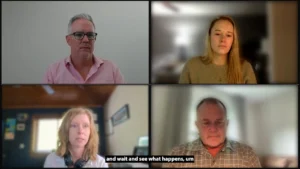Retrofitting Your Building to Go Green
Making the decision to “go green” and do your part to reduce your environmental footprint is an admirable one, but one that comes with an onslaught of questions – how will you go about it? What needs to be changed? Will it require a total upheaval?
Fortunately, the answer may be simpler than you think. Many buildings can be retrofitted to adapt to your newer, greener aspirations, avoiding the hassle of extensive and expensive new construction.
Here are a few tips for retrofitting your space to meet greener goals as a new decade dawns – and to achieve a slimmer bottom line through that retrofitting.
Bring Visibility to Energy Usage
If you had a calorie counter hovering over your head during every meal, chances are you’d opt to skip that second portion of dessert.
Energy consumption can leverage the same idea – by adding a way to view both building-wide energy consumption and a breakdown of which areas might be leaning harder on the grid, you can get a clearer picture of how you’ll need to manage that consumption moving forward.
Have Your Roof Join the Green Movement
When most people think of energy-friendly roofing, solar panels spring to mind.
However, there’s an even more direct solution.
By bringing literal vegetation to your rooftop, you can receive a host of benefits, including the lowering of energy demand.
Seek Out a Load Curtailment Program
While you’re no doubt focused on your own building’s energy efficiency, you can also take a moment to consider your wider impact.
By participating in a load curtailment program, you’ll agree to help offload stress on the grid itself by meeting your power needs on your own during certain times, helping alleviate strain on a larger scale than within your own walls.
Don’t Forget to Involve Everyone
Without engagement from every occupant, the chances of your retrofit plan of action meeting your expectations lower significantly.
Be sure all stakeholders and occupants are aware of the changes you’re making and the desired results and that they’re being active participants in the mission you’ve set out on.
In addition, ensuring that your operations and management staff are constantly monitoring and maintaining new systems and policies will go a long way toward ensuring adoption.
Benefits of Retrofitting
These are only a few ways to work toward retrofitting your space and participating in a greener world – many more exist, such as upgrading lighting, heating and cooling and water-saving systems and committing to upgrading other aspects of your space to more energy-efficient alternatives.
However, they’ll all bring along with them the added benefit of helping you manage your bottom line.
When you choose to go green, you’ll likely notice the following:
- Savings on energy costs, leading to money freed up to be used elsewhere
- Higher productivity from employees due to outside views, more natural light, and more
- Increased health and well-being among occupants
- A positive public perception, as the wider world is trending toward renewable energy efforts and energy efficiency
All of this is achievable without the high-impact commitment the comes with new construction, making going green a realistic goal for businesses of all sizes.
—
For the latest thought leadership, careers, news, and event coverage across B2B, be sure to check out our industry pages.








